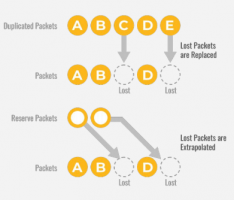5G Wireless SD-WAN
Businesses and government agencies are adopting SD-WAN at a rapid pace to replace legacy WAN running on MPLS. In the mainstream enterprise market, SD-WAN is typically used to add broadband, DSL or mobile links to their existing connection. This enables organizations to increase the bandwidth of existing MPLS connections while providing a failover backup, all at substantial cost savings compared to directly upgrading the MPLS line to the same standard of bandwidth and reliability. Other typical features include WAN optimization, application-specific network rulesets and centralized control of branch network via cloud.
Peplink goes a step further than the above feature sets with our patented SpeedFusion technology. SpeedFusion allows users to combine any number of connections together to form a point-to-point link to achieve what others cannot:

Untethered from fixed line – Combine the bandwidth of several mobile connections to form an ultra-fast data link. Sustain bandwidth-hungry and latency sensitive tasks without the need for fixed lines, such as rolling workplace with full access to multi-cloud and security services, HD video streaming and mobile clinic.

Unbreakable connectivity – SpeedFusion Hot Failover maintains secure tunnels over all available WAN links to keep the network up and running when a connection drops out. If a WAN link fails, SpeedFusion instantly routes traffic to a working tunnel for uninterrupted VoIP sessions.

Unrivaled coverage – SpeedFusion is carrier agnostic and our products are certified with multiple carriers. By combining the coverage network of several mobile carriers, chances of running into a network blindspot or congestion is minimized.
 In the coming years, 5G will bring connectivity to billions of devices outside the reach of any fixed line infrastructure. Furthermore, enterprises will increasingly move to a fixed + mobile network architecture to take advantage of the extreme bandwidth of 5G. Wireless SD-WAN with the capability to intelligently manage thousands of connected devices will become the key technology to power branch networks.
In the coming years, 5G will bring connectivity to billions of devices outside the reach of any fixed line infrastructure. Furthermore, enterprises will increasingly move to a fixed + mobile network architecture to take advantage of the extreme bandwidth of 5G. Wireless SD-WAN with the capability to intelligently manage thousands of connected devices will become the key technology to power branch networks.
Connection Reliability vs Consistency
Reliable connections are not necessarily consistent connections. Although a connection may stay up, it can still suffer from significant packet loss. This results in jitter during VoIP and video streaming, disrupting important communications with lost sentences and distorted video. Peplink has developed technologies to combat the effects of packet loss: WAN Smoothing and Forward Error Correction
WAN Smoothing
This Peplink technology duplicates packets. When packet loss occurs, the duplicated packets replace the lost packets. This technology is best suited
to two-way communications such as VoIP or video conferencing.
Forward Error Correction (FEC)
This Peplink technology duplicates packets. When packet loss occurs, the duplicated packets replace the lost packets. This technology is best suited
to two-way communications such as VoIP or video conferencing.
